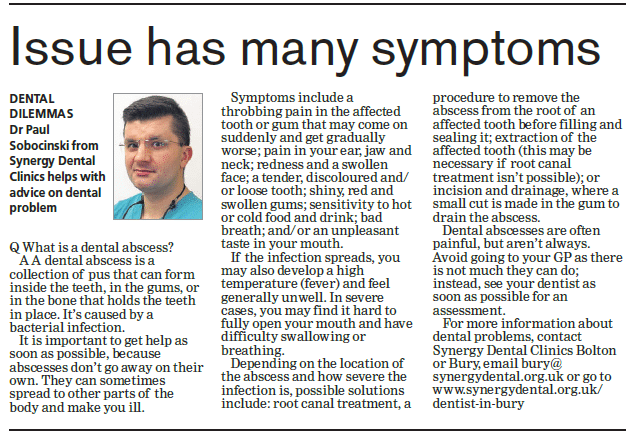A dental abscess is a collection of pus that can form inside the teeth, in the gums, or in the bone that holds the teeth in place. It’s caused by a bacterial infection.
It’s important to get help as soon as possible because abscesses don’t go away on their own. They can sometimes spread to other parts of the body and make you ill.
Symptoms include: a throbbing pain in the affected tooth or gum that may come on suddenly and gets gradually worse, pain in your ear, jaw and neck, redness and swollen face, a tender, discoloured and/or loose tooth, shiny, red and swollen gums, sensitivity to hot or cold food and drink, bad breath and/or an unpleasant taste in your mouth
If the infection spreads, you may also develop a high temperature (fever) and feel generally unwell. In severe cases, you may find it hard to fully open your mouth and have difficulty swallowing or breathing.
Depending on the location of the abscess and how severe the infection is, possible treatments include:
- root canal treatment – a procedure to remove the abscess from the root of an affected tooth before filling and sealing it.
- Extraction of the affected tooth (this may be necessary if root canal treatment isn’t possible).
- Incision and drainage – where a small cut is made in the gum to drain the abscess.
Dental abscesses are often painful, but aren’t always. Avoid going to your GP as there is not much they can do; instead, see your dentist as soon as possible for an assessment.

